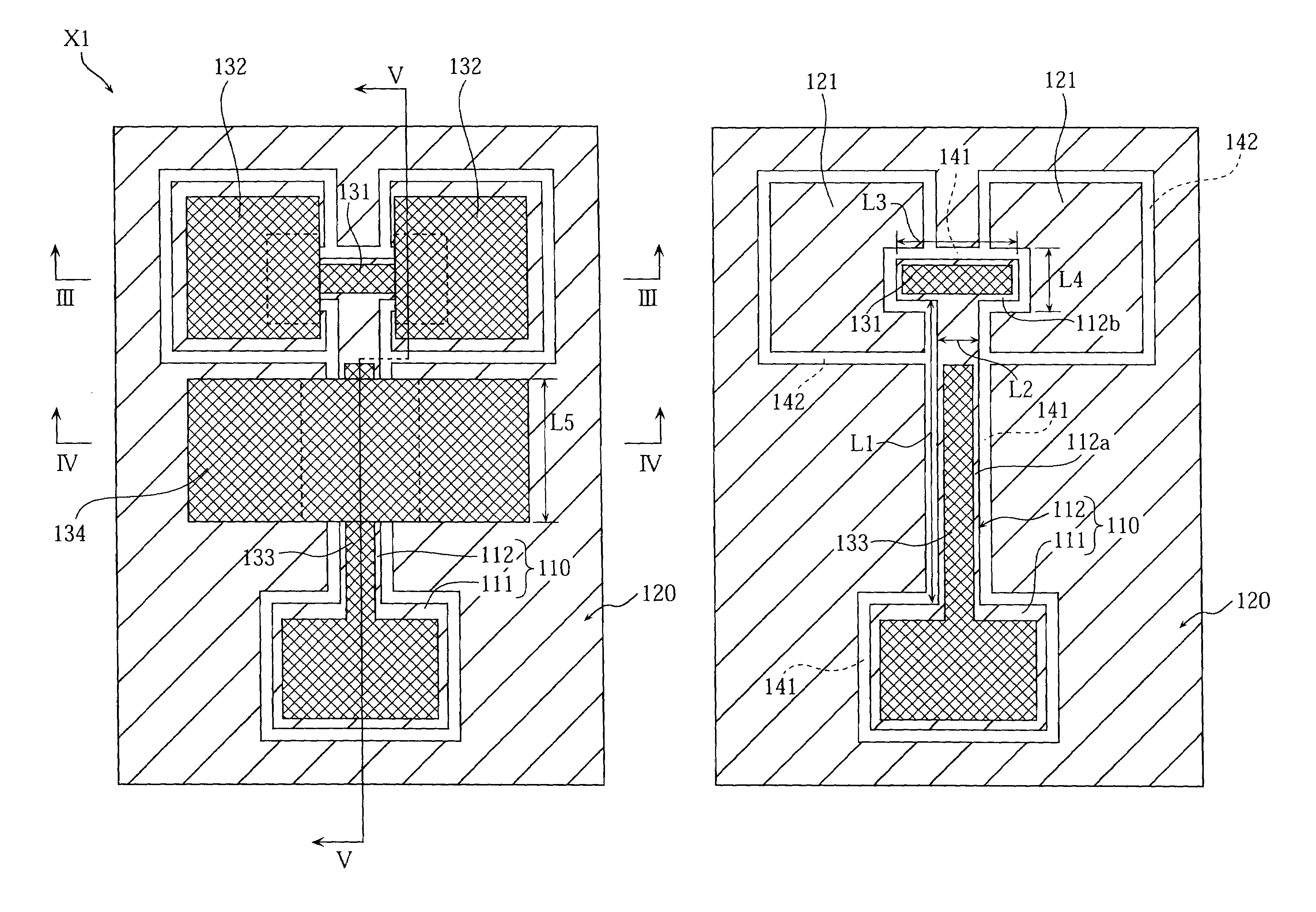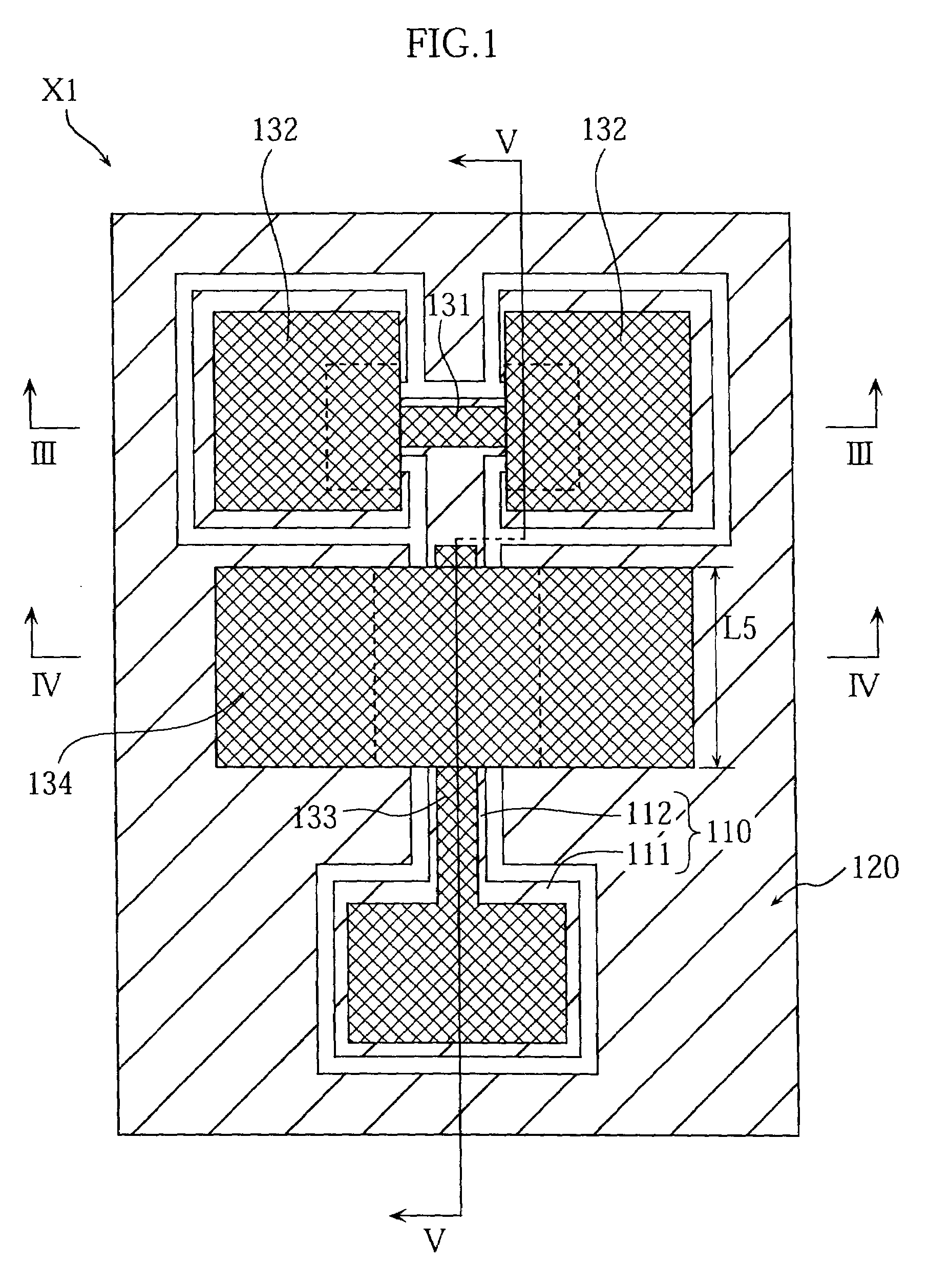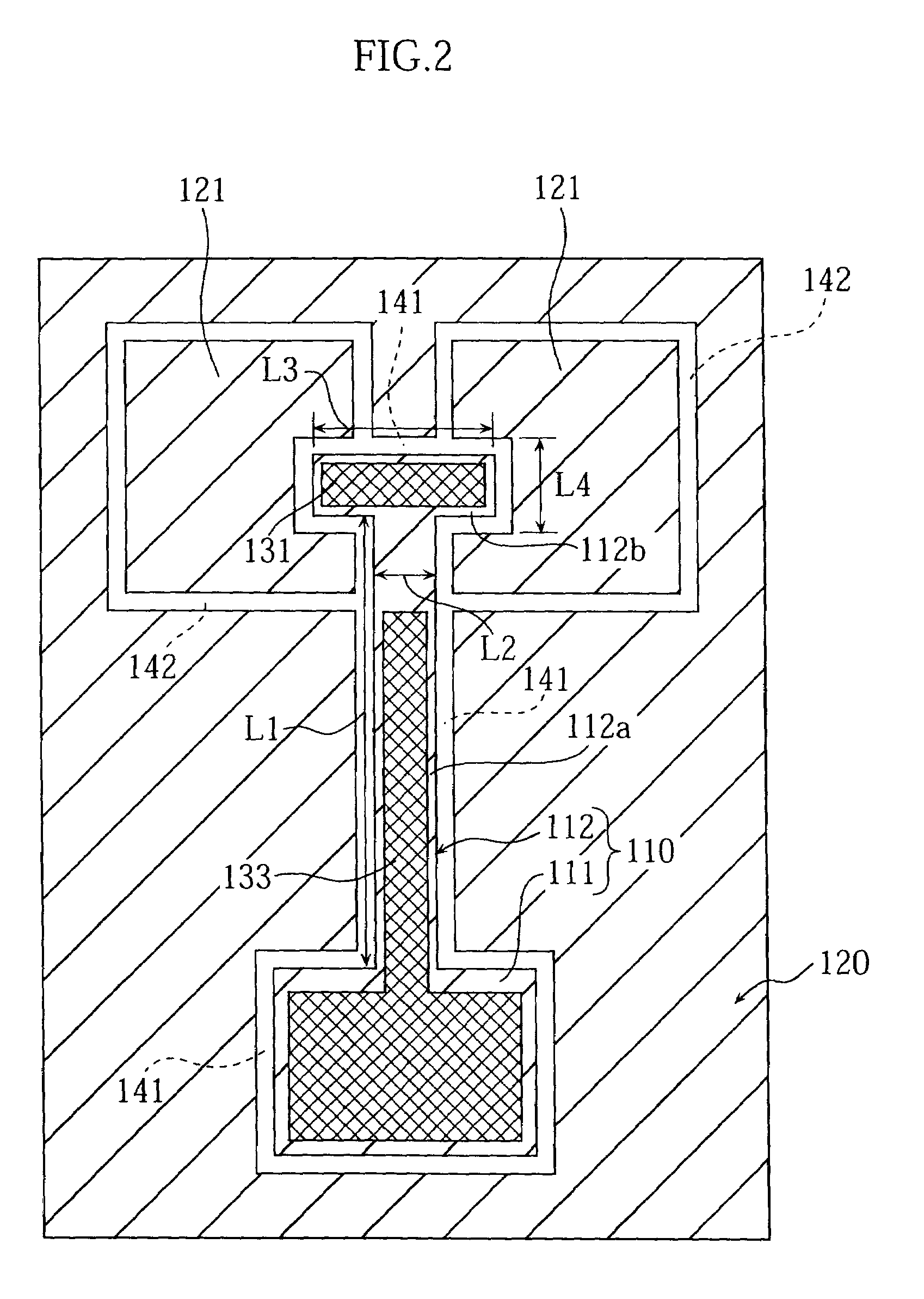Micro-switching device and method of manufacturing micro-switching device
a micro-switching device and micro-switching technology, applied in the direction of contacts, coatings, relays, etc., can solve the problems of difficult to make the stationary contact electrode 404/b> thick, difficult to realize a sufficiently low resistance, and not be able to realize a low insertion loss, etc., to achieve the effect of reducing the insertion loss
- Summary
- Abstract
- Description
- Claims
- Application Information
AI Technical Summary
Benefits of technology
Problems solved by technology
Method used
Image
Examples
first embodiment
[0061]FIGS. 1 to 5 show a micro-switching device X1 according to the present invention. FIG. 1 is a plan view of the micro-switching device X1, FIG. 2 is a plan view of the micro-switching device X1 with some parts omitted, and FIGS. 3 to 5 are respectively sectional views along lines III-III, IV-IV and V-V in FIG. 1.
[0062]The micro-switching device X1 includes a base substrate S1, a movable cantilever portion 110, a fixing member 120, a movable contact conductor 131, a pair of stationary contact electrodes 132 (omitted from FIG. 2), a first driving electrode 133, and a second driving electrode 134 (omitted from FIG. 2).
[0063]The movable cantilever portion 110 has an anchor part 111 and an extending part 112. As shown in FIG. 5, the anchor part 111 has a layered structure having a main layer 111a and a boundary layer 111b, and is joined to the base substrate S1 on the boundary layer 111b side. As shown for example in FIGS. 2 and 5, the extending part 112 has a body 112a and a head 1...
second embodiment
[0088]FIGS. 13 to 16 show a micro-switching device X2 according to the present invention. FIG. 13 is a plan view of the micro-switching device X2, FIG. 14 is a plan view of the micro-switching device X2 with some parts omitted, and FIGS. 15 and 16 are respectively sectional views along lines XV-XV and XVI-XVI in FIG. 13.
[0089]The micro-switching device X2 includes a base substrate S2, four movable cantilever portions 210, a fixing member 220, four movable contact conductors 231, a common contact electrode 232 (omitted from FIG. 14), four stationary individual contact electrodes 233 (omitted from FIG. 14), four first driving electrodes 234, and two second driving electrodes 235 (omitted from FIG. 14). The micro-switching device X2 is provided with four micro-switching devices X1 of the first embodiment.
[0090]Each of the movable portions 210 has an anchor part 211 and an extending part 212. As with the anchor part 111 described earlier, the anchor part 211 has a layered structure havi...
third embodiment
[0099]FIGS. 17 to 19 show a micro-switching device X3 according to the present invention. FIG. 17 is a plan view of the micro-switching device X3. FIG. 18 is a plan view of the micro-switching device X3 with some parts omitted, and FIG. 19 is a sectional view along line XIX-XIX in FIG. 18.
[0100]The micro-switching device X3 includes a base substrate S3, a movable cantilever portion 110, a fixing member 120, a movable contact conductor 131, a pair of stationary contact electrodes 132 (omitted from FIG. 18), and a piezoelectric driving segment 340. The micro-switching device X3 differs from the micro-switching device X1 in that the piezoelectric driving segment 340 is provided in place of the first driving electrode 133 and the second driving electrode 134.
[0101]The piezoelectric driving segment 340 includes a first driving electrode 341, a second driving electrode 342, and a piezoelectric film 343 provided between the two electrodes. The first driving electrode 341 and the second dri...
PUM
| Property | Measurement | Unit |
|---|---|---|
| thickness | aaaaa | aaaaa |
| thickness | aaaaa | aaaaa |
| thickness | aaaaa | aaaaa |
Abstract
Description
Claims
Application Information
 Login to View More
Login to View More - R&D
- Intellectual Property
- Life Sciences
- Materials
- Tech Scout
- Unparalleled Data Quality
- Higher Quality Content
- 60% Fewer Hallucinations
Browse by: Latest US Patents, China's latest patents, Technical Efficacy Thesaurus, Application Domain, Technology Topic, Popular Technical Reports.
© 2025 PatSnap. All rights reserved.Legal|Privacy policy|Modern Slavery Act Transparency Statement|Sitemap|About US| Contact US: help@patsnap.com



